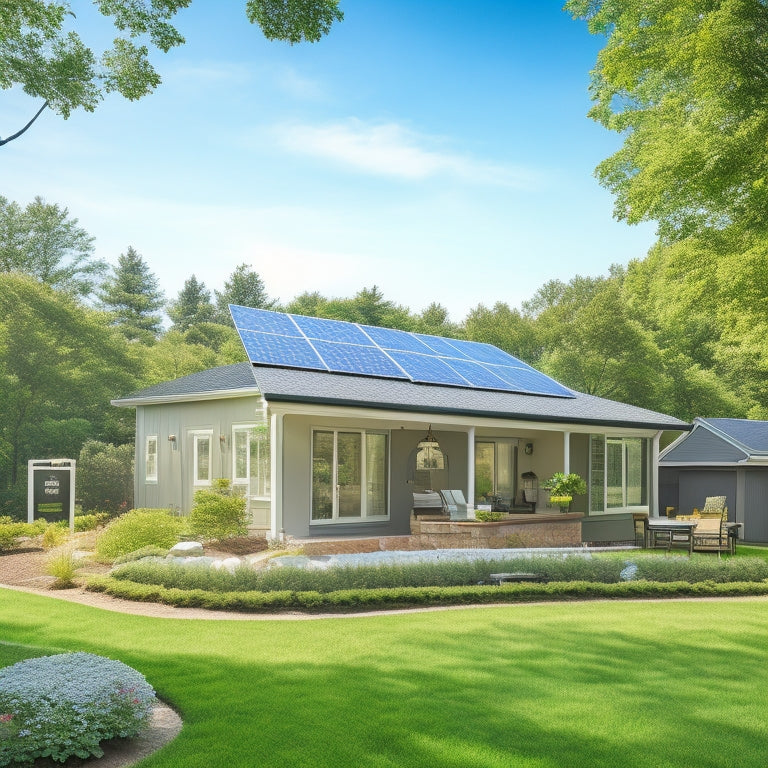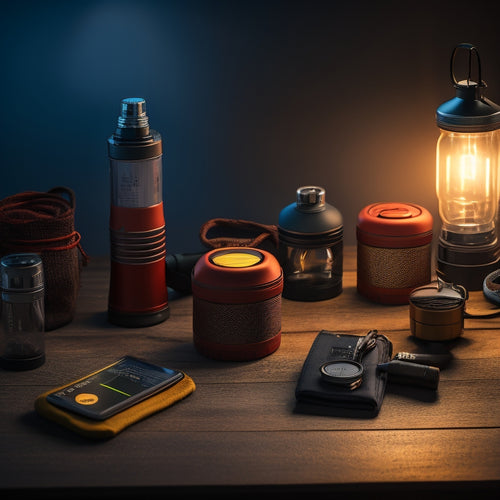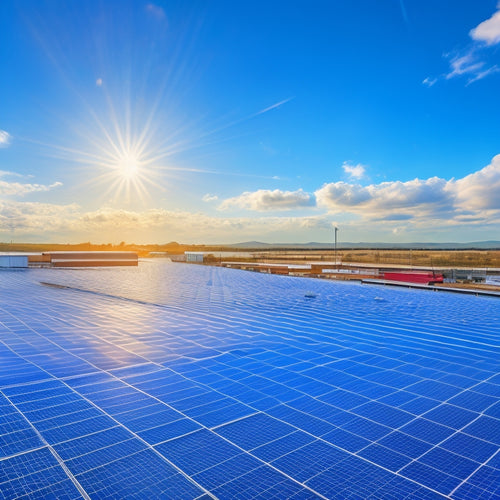
What Fuels Home Energy Independence With Cooling?
Share
You're looking to fuel your home energy independence with cooling by leveraging renewable energy sources, such as solar and geothermal power, to reduce your reliance on fossil fuels and lower your energy consumption. Solar-powered cooling systems offer a sustainable alternative, utilizing sunlight for cooling and reducing energy bills. By integrating these systems with battery storage and energy management solutions, you can store excess energy for peak cooling hours. To take it a step further, grid-free cooling system designs incorporate passive cooling strategies, thermal mass, and natural ventilation to minimize mechanical cooling and optimize energy use. As you investigate these solutions, you'll uncover the path to a more comfortable and sustainable living environment unfolds.
Key Takeaways
- Wind energy is a clean and abundant resource for home power, reducing reliance on fossil fuels.
- Solar power solutions in rural areas promote energy independence and reduce waste with biogas energy.
- Solar thermal systems utilize sunlight for cooling, lowering energy consumption and fossil fuel usage.
- Battery storage allows excess energy to be stored for peak cooling hours, enabling home energy independence.
- Grid-free cooling system designs integrate renewable energy sources with storage solutions for sustainable living.
Harnessing Renewable Energy Sources
With the goal of achieving home energy independence in sight, employing renewable energy sources becomes an essential step in reducing reliance on fossil fuels and mitigating climate change.
You're likely aware that fossil fuels are finite resources, and their continued use contributes to greenhouse gas emissions. By capturing renewable energy sources, you can greatly reduce your carbon footprint.
Wind energy, for instance, is a clean and abundant resource that can power your home. Geothermal systems, which tap into the earth's natural heat, can provide both heating and cooling.
In rural areas, solar power solutions offer reliable and renewable energy, promoting energy independence. Additionally, biogas energy makes use of organic waste for clean-burning fuel, reducing waste disposal costs.
Cooling Systems Powered by Sun
By the time summer rolls around, you're likely to rely heavily on your air conditioning system to keep your home cool and comfortable. However, this can lead to increased energy consumption and higher utility bills.
Fortunately, there's a way to reduce your reliance on traditional cooling systems and shift to a more sustainable solution. Cooling systems powered by the sun offer an innovative approach to home cooling. Off-grid energy solutions off-grid solar power systems can greatly reduce your reliance on non-renewable energy sources, contributing to a cleaner environment and lowering carbon footprints for rural homes.
Solar thermal systems, for instance, use heat from the sun to provide cooling, reducing your energy consumption and carbon footprint. Additionally, incorporating passive cooling strategies, such as proper insulation and shading, can further minimize your cooling needs.
Solar Panel Efficiency Factors
Nearly 20% of a solar panel's effectiveness depends on its ability to convert sunlight into electricity efficiently.
You'll want to take into account the type of solar panel you're using, as different types have varying efficiency rates. Monocrystalline solar panels, for instance, have higher efficiency rates than polycrystalline panels.
Regular cleaning can also improve energy output, with clean panels increasing energy output by up to 25%.
The efficiency of a solar panel also depends on its energy conversion rate, which is measured by its power output per unit area. Look for solar panels with high power output ratings and low temperature coefficients for ideal energy conversion.
Additionally, evaluate the panel's fill factor, which affects its ability to convert sunlight into usable energy.
Battery Storage for Cooling Needs
You've optimized your solar panel system for maximum energy harvesting, but now it's time to contemplate how to store that energy for your cooling needs.
Battery storage is an essential component of home energy independence, allowing you to store excess energy generated during the day for use during peak cooling hours. Effective energy management is key to ensuring your cooling needs are met.
When it comes to battery storage for cooling, consider the following:
-
Depth of discharge: How deeply you can discharge your batteries without compromising their lifespan.
-
Thermal storage: Storing thermal energy in the form of chilled water or ice for later use.
-
Energy management systems: Sophisticated software that optimizes energy use and storage to meet your cooling demands.
Grid-Free Cooling System Designs
Freedom from the grid's constraints is within reach as you design a grid-free cooling system that seamlessly integrates with your renewable energy sources and energy storage solutions.
You'll want to contemplate passive cooling strategies that utilize natural ventilation, shading, and thermal mass to reduce cooling demands.
Thermal mass, in particular, can be an effective heat sink, absorbing and releasing heat as needed.
By incorporating these design elements, you can minimize the need for mechanical cooling and maximize your energy independence.
A well-designed grid-free cooling system won't only reduce your reliance on the grid but also provide a comfortable and sustainable living space.
Frequently Asked Questions
Can I Still Use My Existing HVAC System With a Solar Cooling Setup?
You can integrate your existing HVAC system with a solar cooling setup, but it's essential to guarantee HVAC compatibility and proper solar integration to optimize performance and efficiency.
How Much Does a Typical Solar Cooling System Cost to Install?
You'll invest around $15,000 to $30,000 in a typical solar cooling system, depending on the solar panel types and installation process, which includes sizing, permits, and labor costs, varying by location and system complexity.
Are There Government Incentives for Home Energy Independence Projects?
You'll find various government incentives for home energy independence projects, including federal rebates, state incentives, tax credits, and financing options, which can help offset installation costs, promoting energy efficiency and the adoption of renewable resources through residential programs and installation grants.
Can I Charge My Electric Vehicle With My Solar Cooling System?
You're likely aware that 80% of EV owners charge their vehicles at home. Yes, you can charge your electric vehicle with your solar cooling system, leveraging solar charging and energy storage to maximize your energy independence and reduce reliance on the grid.
Do Solar Cooling Systems Work Efficiently in Shaded Areas?
You'll find that solar cooling systems' efficiency in shaded areas depends on the system's design and shading severity, as even partial shading can reduce solar performance, impacting overall shaded efficiency, but some systems can still operate effectively with clever design and optimization.
Related Posts
-

Best Solar Powered Flashlights for Emergency Situations
When you're choosing the best solar-powered flashlights for emergency situations, focus on their brightness, battery ...
-

Replacing Old Appliances With Sustainable Alternatives
Replacing old appliances with sustainable alternatives can change your home into an energy-efficient space. Not only ...
-

Commercial Solar Energy
As you consider powering your business with commercial solar energy, you'll uncover it offers a triple benefit: signi...


